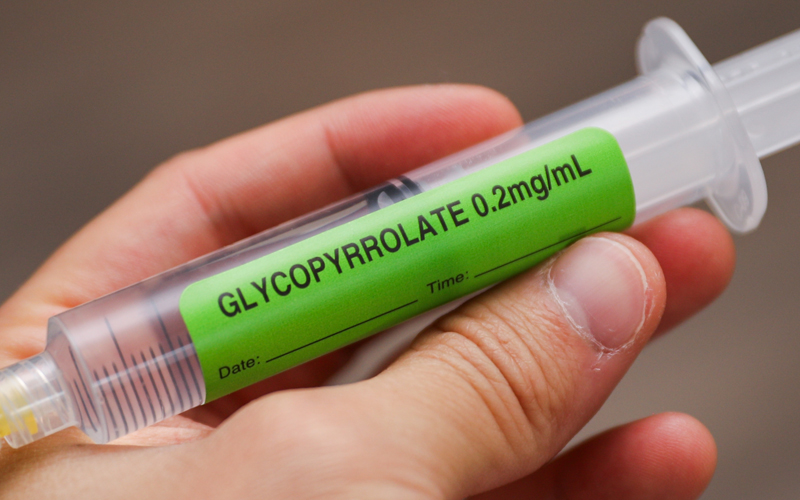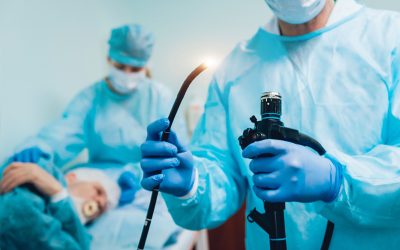By Ed Sutton, MD
During the last several decades of the 20th century, clinicians frequently used Glycopyrrolate (Robinul) in a mixture as an intramuscular injection before surgery. They added it as a premedication for its antisialagogue effect and administered it before the patient’s arrival in the operating room to ensure its drying effect took full effect. Does modern anesthesia practice justify routinely using glycopyrrolate as a premed, or has it become an outdated practice that providers should abandon to achieve ‘best practices’? To make that decision, each anesthesia provider must weigh the benefits against the risks involved in the procedure.
Glycopyrrolate is a synthetic anticholinergic antagonist at the muscarinic receptor; it does not affect nicotinic receptors (which are competitively blocked by the tubocurarine/aminosteroid class of drugs and activated by succinylcholine). Glycopyrrolate has broad effects across the parasympathetic nervous system, often creating unwanted effects other than the desired antisialagogue effect. The effects are also of long duration, 6-8 hours.
The smooth muscle relaxation effects of the drug are significant in the endoscopy suite.. The esophagus is the only muscle composed of striated voluntary and smooth involuntary muscle fibers.. The upper one-third of the organ is striated fibers, subject to voluntary contraction, the middle is a mixture of both striated and smooth muscle fibers, and the lower is purely smooth muscle. The last few centimeters of the esophagus are smooth muscle fibers comprising the lower esophageal sphincter and are responsible for preventing the reflux of stomach contents into the esophagus. . Glycopyrrolate directly decreases the tone of the lower esophageal sphincter. It would worsen any potential reflux of acid and stomach contents into the esophagus and potentially increase the potential for aspiration Clinicians should contraindicate the drug in patients with GERD, especially when deep sedation in an unprotected airway—commonly seen in GI procedures—is involved. Glycopyrrolate also relaxes smooth muscle in the small and large intestines, making it challenging to expel any potential air used for insufflation.
The effects of glycopyrrolate on the eye are also unacceptable. The drug decreases lacrimal gland function, creating dry eyes that are often not lubricated during deep sedation cases. The drug relaxes both the iris and the ciliary body, which in patients with histories of intraocular hypertension or undiagnosed glaucoma can lead to acute angle closure glaucoma (AACG), severe eye pain, blurred vision, nausea and vomiting, and optic nerve damage.
The drug also affects the smooth muscle throughout the urinary system and has the potential to cause acute urinary retention in males who may have any prostatic hypertrophy. Moreover, the effects can be of long duration, lasting long after patients have left any medical facility, necessitating a return to the ED for in and out cath to relieve their retention and pain.
The other major use of glycopyrrolate in anesthesia involves the drug to antagonize the cholinergic effects of acetylcholinesterase inhibitors, such as neostigmine. While the onset of actions of glycopyrrolate and neostigmine are well matched, the durations of action are not. The duration of action of neostigmine is significantly shorter than that of glycopyrrolate, and can lead to unopposed anticholinergic side effects, e.g., post op ileus, urinary retention. Sugammadex is the drug of choice for reversal of aminosteroid muscle relaxants.
I believe the amount of risk involved in using glycopyrrolate as a premedication far outweighs any benefits seen with the drug and should be abandoned as a relic from 20th-century anesthesia practice.



